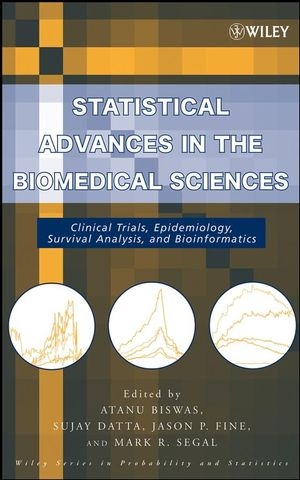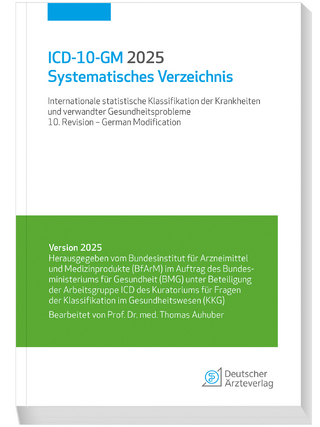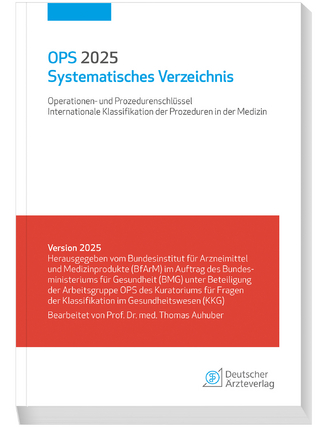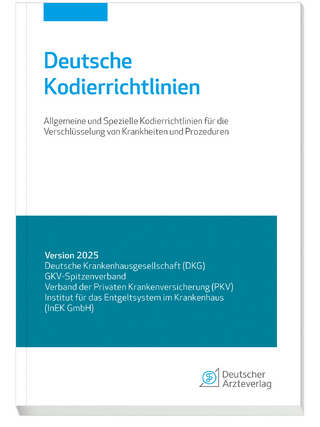
Statistical Advances in the Biomedical Sciences
Wiley-Interscience (Verlag)
978-0-471-94753-0 (ISBN)
- Titel z.Zt. nicht lieferbar
- Versandkostenfrei
- Auch auf Rechnung
- Artikel merken
The Most Comprehensive and Cutting-Edge Guide to Statistical Applications in Biomedical Research With the increasing use of biotechnology in medical research and the sophisticated advances in computing, it has become essential for practitioners in the biomedical sciences to be fully educated on the role statistics plays in ensuring the accurate analysis of research findings. Statistical Advances in the Biomedical Sciences explores the growing value of statistical knowledge in the management and comprehension of medical research and, more specifically, provides an accessible introduction to the contemporary methodologies used to understand complex problems in the four major areas of modern-day biomedical science: clinical trials, epidemiology, survival analysis, and bioinformatics.
Composed of contributions from eminent researchers in the field, this volume discusses the application of statistical techniques to various aspects of modern medical research and illustrates how these methods ultimately prove to be an indispensable part of proper data collection and analysis. A structural uniformity is maintained across all chapters, each beginning with an introduction that discusses general concepts and the biomedical problem under focus and is followed by specific details on the associated methods, algorithms, and applications. In addition, each chapter provides a summary of the main ideas and offers a concluding remarks section that presents novel ideas, approaches, and challenges for future research.
Complete with detailed references and insight on the future directions of biomedical research, Statistical Advances in the Biomedical Sciences provides vital statistical guidance to practitioners in the biomedical sciences while also introducing statisticians to new, multidisciplinary frontiers of application. This text is an excellent reference for graduate- and PhD-level courses in various areas of biostatistics and the medical sciences and also serves as a valuable tool for medical researchers, statisticians, public health professionals, and biostatisticians.
Atanu Biswas, PhD, is Assistant Professor in the Applied Statistics Unit at the Indian Statistical Institute, Kolkata in India. Dr. Biswas has authored more than eighty published articles and also serves as Associate Editor of several journals, including Sequential Analysis and Communications in Statistics. He is the recipient of the M.N. Murthy Award for his research in applied statistics. Sujay Datta, PhD, is Associate Professor in the Department of Mathematics and Computer Science at Northern Michigan University and Visiting Research Scientist in the Department of Statistics at TexasA&M University, where he is part of a bioinformatics research program sponsored by the National Institutes of Health. Dr. Datta's research interests include high-throughput data, genomics, and models based on graphs/networks. Jason P. Fine, PhD, is Associate Professor in the Department of Statistics at the University of Wisconsin-Madison and also serves as Associate Editor of several journals, including Biometrics, Biostatistics, and the Scandinavian Journal of Statistics. Mark R. Segal, PhD, is Professor in the Department of Epidemiology and Biostatistics at the University of California, San Francisco. A Fellow of the American Statistical Association, Dr. Segal has published extensively and currently focuses his research in the area of bioinformatics.
SECTION I.CLINICAL TRIALS. 1. Phase I Clinical Trials in Oncology (Anastasia Ivanova and Nancy Flournoy).
1.1 Introduction.
1.2 Phase I Trials in Healthy Volunteers.
1.3 Phase I Trials With Toxic Outcomes Enrolling Patients.
1.4 Other Design Problems in Dose Finding.
1.5 Concluding Remarks.
References.
2. Phase II Clinical Trials (Nigel Stallard).
2.1 Introduction.
2.2 Frequentist methods in phase II clinical trials.
2.3 Bayesian methods in phase II clinical trials.
2.4 Decision theoretic methods in phase II clinical trials.
2.5 Clinical trials combining phases II and III.
2.6 Outstanding issues in phase II clinical trials.
References.
3. Response Adaptive Designs in Phase III Clinical Trials (Atanu Biswas, Uttam Bandyopadhyay and Rahul Bhattacharya).
3.1 Introduction
3.3 Adaptive Designs for Binary Treatment Responses Incorporating Covariates.
3.4 Adaptive Designs for Categorical Responses.
3.5 Adaptive Designs for Continuous Responses.
3.6 Optimal Adaptive Designs.
3.7 Delayed Responses in Adaptive Designs.
3.8 Biased Coin Designs.
3.9 Real Adaptive Clinical Trials.
3.10 Data Study for Different Adaptive Scheme.
3.11 Concluding Remarks.
References.
4. Inverse Sampling for Clinical Trials: A Brief Review of Theory and Practice (Atanu Biswas and Uttam Bandyopadhyay).
4.1 Introduction.
4.2 Two-Sample Randomized Inverse Sampling for Clinical Trials.
4.3 An Example of Inverse Sampling: Boston ECMO.
4.4 Inverse Sampling in Adaptive Designs.
4.5 Concluding.
5. The Design and Analysis Aspects of Cluster Randomized Trials (Hrishikesh Chakraborty).
5.1 Introduction: Cluster Randomized Trials.
5.2 Intra-Cluster Correlation Coefficient and Confidence Interval.
5.3 Sample Size Calculation for Cluster Randomized Trials.
5.4 Analysis of Cluster Randomized Trial Data.
5.5 Concluding Remarks.
References.
SECTION II. EPIDEMIOLOGY.
6. HIV Dynamics Modeling and Prediction of Clinical Outcomes in AIDS Clinical Research (Yangxin Huang and Hulin Wu).
6.1 Introduction.
6.2 HIV Dynamic Model and Treatment Effects Models.
6.3 Statistical Methods for Predictions of Clinical Outcomes.
6.4 Simulation Study.
6.5 Clinical Data Analysis.
6.6 Concluding Remarks.
References.
7. Spatial Epidemiology (Lance A. Waller).
7.1 Space and Disease.
7.2 Basic Spatial Questions and Related Data.
7.3 Quantifying Pattern in Point Data.
7.4 Predicting Spatial Observations.
7.5 Concluding Remarks.
References.
8. Modeling Disease Dynamics: Cholera as a Case Study (Edward L. Ionides, Carles Breto and Aaron A. King).
8.1 Introduction.
8.2 Data Analysis via Population Models.
8.3 Sequential Monte Carlo.
8.4 Modeling Cholera.
8.5 Concluding Remarks.
References.
9. Misclassification and Measurement Error Models in Epidemiological Studies (Surupa Roy and Tathagata Banerjee).
9.1 Introduction.
9.2 A Few Examples.
9.3 Binary Regression Models with Two Types of Errors.
9.4 Bivariate Binary Regression Models with Two Types of Errors.
9.5 Models for Analyzing Mixed Misclassified Binary and Continuous Responses.
9.6 Atom Bomb Data Analysis.
9.7 Concluding Remarks.
References.
SECTION III. SURVIVAL ANALYSIS.
10. Semiparametric Maximum Likelihood Inference in Survival Analysis (Michael R. Kosorok).
10.1 Introduction
10.2 Examples of Survival Models.
10.3 Basic Estimation and Limit Theory.
10.4 The Bootstrap.
10.5 The Profile Sampler.
10.6 The Piggyback Bootstrap.
10.7 Other Approaches.
10.8 Concluding Remarks.
References.
11. An Overview of the Semi-Competing Risks Problem (Limin Peng, Hongyu Jiang, Richard J. Chappell and Jason P. Fine).
11.1 Introduction.
11.2 Nonparametric Inferences.
11.3 Semiparmetric One-Sample Inference.
11.4 Semiparametric Regression Method.
11.5 Concluding Remarks.
References.
12. Tests for Time-Varying Covariate Effects within Aalen's Additive Hazards Model (Thomas H. Scheike and Torben Martinussen).
12.1 Introduction.
12.2 Model Specification and Inferential Procedures.
12.3 Numerical Results.
12.4 Concluding Remarks.
12.5 Summary.
References.
13. Analysis of Outcomes Subject to Induced Dependent Censoring: A Marked Point Process Perspective (Eugene Huang).
13.1 Introduction.
13.2 Induced Dependent Censoring and Associated Identifiability Issues.
13.3 Marked Point Process.
13.4 Modeling Strategy for Testing and Regression.
13.5 Concluding Remarks.
References.
14. Analysis of Dependence in Multivariate Failure-Time Data (Zoe Moodie and Li Hsu).
14.1 Introduction.
14.2 Nonparametric Bivariate Survivor Function Estimation.
14.3 Non- and Semi-Parametric Estimation of Dependence Measures.
14.4 Concluding Remarks.
References.
15. Robust Estimation for Analyzing Recurrent Events Data in the Presence of Terminal Events (Rajeshwari Sundaram).
15.1 Introduction.
15.2 Inference Procedures.
15.3 Large Sample Properties.
15.4 Numerical Results.
15.5 Concluding Remarks.
References.
16. Tree-Based Methods for Survival Data (Mousumi Banerjee and Anne-Michelle Noone).
16.1 Introduction.
16.2 Review of CART.
16.3 Trees for Survival Data.
16.4 Simulations to Compare Different Splitting Methods.
16.5 Example: Breast Cancer Prognostic Study.
16.6 Random forest for Survival Data.
16.7 Concluding Remarks.
References.
17. Bayesian Estimation of the Hazard Function with Randomly Right-Censored Data (Jean-Francois Angers and Brenda MacGibbon).
17.1 Introduction.
17.2 Bayesian Functional Model Using Monotone Wavelet Approximation.
17.3 Estimation of the Sub-Density F*.
17.4 Simulations.
17.5 Example.
17.6 Concluding Remarks.
References.
SECTION IV. GENOMICS AND PROTEOMICS.
18. The Effects of Inter-Gene Associations on Statistical Inferences From Microarray Data (Kerby Shedden).
18.1 Introduction.
18.2 Inter-Gene Correlation.
18.3 Differential Expression.
18.4 Time Course Experiments.
18.5 Meta-Analysis.
18.6 Concluding Remarks.
References.
19. A Comparison of Methods for Meta-Analysis of Gene Expression Data (Hyungwon Choi and Debashis Ghosh).
19.1 Introduction.
19.2 Background.
19.3 Example.
19.4 Cross Comparison of Gene Signatures.
19.5 Best Common Mean Difference Method.
19.6 Effect Size Method.
19.7 Probability of Expression (POE) Assimilation Method.
19.8 Comparison of Three Methods.
19.9 Conclusions.
References.
20. Statistical Methods for Identifying Differentially Expressed Genes in Replicated Microarray Experiments: A Review (Lynn Kuo, Fang Yu and Yifang Zhao).
20.1 Introduction.
20.2 Normalization.
20.3 Methods for Selecting Differentially Expressed Genes.
20.4 Simulation Study.
20.5 Concluding Remarks.
References.
21. Clustering of Microarray Data via Mixture Models (Geoffrey McLachlan, Richard W. Bean and Angus Ng).
21.1 Introduction.
21.2 Clustering of Microarray Data.
21.3 Notation.
21.4 Clustering of Tissue Samples.
21.5 The EMMIX-GENE Clustering Procedure.
21.6 Clustering of gene profile.
21.7 EMMIX-WIRE.
21.8 ML Estimation via the EM Algorithm.
21.9 Model Selection.
21.10 Example: Clustering of Time-Course Data.
21.11 Concluding Remarks.
References.
22. Censored Data Regression in High-Dimension and Low-Sample-Size Settings for Genomic Applications (Hongzhe Li).
22.1 Introduction.
22.2 Censored Data Regression Models.
22.3 Regularized Estimation for Censored Data Regression Models.
22.4 Survival Ensemble Methods.
22.5 Nonparametric Pathway-Based Regression Models.
22.6 Dimension-Reduction-Based Methods and Bayesian Variable Selection Methods.
22.7 Criteria for Evaluating Different Procedures.
22.8 Application to a Real Data Set and Comparisons.
22.9 Discussion and Future Research Topics.
22.10 Concluding Remarks.
References.
23. Analysis of Case-Control Studies in Genetic Epidemiology (Nilanjan Chatterjee).
23.1 Introduction.
23.2 Maximum Likelihood Analysis of Case-Control Data with Complete Information.
23.3 Haplotype-Based Genetic Analysis with Missing Phase Information
23.4 Concluding Remarks.
References.
24. Assessing Network Structure in the Presence of Measurement Error (Denise Scholtens, Raji Balasubramanian and Robert Gentleman).
24.1 Introduction
24.2 Graphs of Biological Data.
24.3 Statistics on Graphs.
24.4 Graph Theoretic Models.
24.5 Types of Measurement Error.
24.6 Exploratory Data Analysis.
24.7 Influence of Measurement Error on Graph Statistics.
24.8 Biological Implications.
24.9 Conclusions.
References.
25. Prediction of RNA Splicing Signals (Mark Segal).
25.1 Introduction.
25.2 Existing Approaches to Splice Site Identification.
25.3 Splice Site Recognition Contemporary Classifiers.
25.4 Results.
25.5 Concluding Remarks.
References.
26. Statistical Methods for Biomarker Discovery Using Mass Spectrometry (Bradley M. Broom and Kim-Anh Do).
26.1 Introduction.
26.2 Biomarker Discovery.
26.3 Statistical Methods for Pre-Processing.
26.4 Statistical Methods for Multiple Testing, Classification and Applications spectra.
26.5 Potential Statistical Developments.
26.6 Concluding Remarks.
References.
27. Genetic Mapping of Quantitative Traits: Model-Free Sib-Pair Linkage Approaches (Saurabh Ghosh and Parthe P. Majumder).
27.1 Introduction.
27.2 The Basic QTL Framework for Sib-Pairs.
27.3 The Haseman-Elston Regression Framework.
27.4 Nonparametric Alternatives.
27.5 The Modified Nonparametric Regression.
27.6 Comparison with Linear Regression Methods.
27.7 Significance Levels and Empirical Power.
27.8 An Application to Real Data.
27.9 Concluding Remarks.
References.
SECTION V. MISCELLANEOUS TOPICS.
28. Robustness Issues in Biomedical Studies (Ayanendranath Basu).
28.1 Introduction: The Need for Robust Procedures.
28.2 Standard Tools for Robustness.
28.3 The Robustness Question in Biomedical Studies.
28.4 Robust Estimation in the Logistic Regression Model.
28.5 Robust Estimation for Censored Survival Data.
28.6 Adaptive Robust Methods in Clinical Trials.
28.7 Concluding Remarks.
References.
29. Recent Advances in the Analysis of Episodic Hormone Data (Timothy D. Johnson and Yuedong Wang).
29.1 Introduction.
29.2 A General Biophysical Model.
29.3 Bayesian Deconvolution Model (BDM).
29.4 Nonlinear Mixed Effects Partial Splines Models.
29.5 Concluding Remarks.
References.
30. Models for Carcinogenesis (Anup Dewanji).
30.1 Introduction.
30.2 Statistical Models.
30.3 Multistage Models.
30.4 Two-Stage Clonal Expansion Model.
30.5 Physiologically Based Pharmacokinetic Models.
30.6 Statistical Methods.
30.7 Concluding Remarks.
References.
Author Index.
Subject Index.
| Erscheint lt. Verlag | 8.2.2008 |
|---|---|
| Reihe/Serie | Wiley Series in Probability and Statistics |
| Zusatzinfo | Charts: 7 B&W, 0 Color; Drawings: 2 B&W, 0 Color; Graphs: 68 B&W, 0 Color |
| Sprache | englisch |
| Maße | 163 x 236 mm |
| Gewicht | 998 g |
| Themenwelt | Informatik ► Weitere Themen ► Bioinformatik |
| Mathematik / Informatik ► Mathematik ► Statistik | |
| Mathematik / Informatik ► Mathematik ► Wahrscheinlichkeit / Kombinatorik | |
| Medizin / Pharmazie ► Physiotherapie / Ergotherapie ► Orthopädie | |
| Studium ► Querschnittsbereiche ► Epidemiologie / Med. Biometrie | |
| Technik ► Medizintechnik | |
| ISBN-10 | 0-471-94753-9 / 0471947539 |
| ISBN-13 | 978-0-471-94753-0 / 9780471947530 |
| Zustand | Neuware |
| Informationen gemäß Produktsicherheitsverordnung (GPSR) | |
| Haben Sie eine Frage zum Produkt? |
aus dem Bereich


